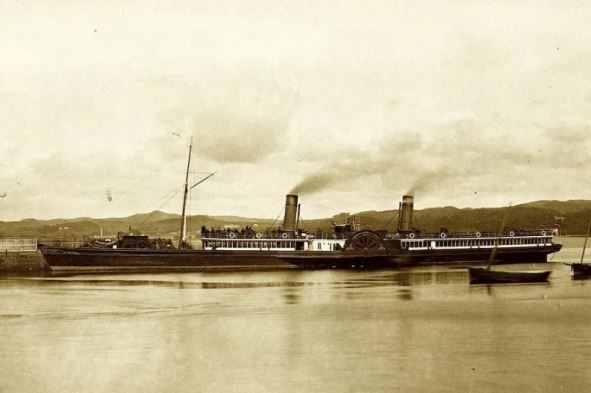Iona II 1864
N51 11.061 W4 38.859
Protected site

 The American Civil War took place from 1861 to 1865, with the slave owning southerners fighting against the industrialised northerners. While essentially it was a single country war, its effects spread far and wide, including to the United Kingdom. Several participants in the war have also entered into world history such as General Robert E Lee who was on the Confederate side and President Abraham Lincoln who led the Union states.
The American Civil War took place from 1861 to 1865, with the slave owning southerners fighting against the industrialised northerners. While essentially it was a single country war, its effects spread far and wide, including to the United Kingdom. Several participants in the war have also entered into world history such as General Robert E Lee who was on the Confederate side and President Abraham Lincoln who led the Union states.
During the 1860s, the world leader in producing ships was the Clyde. Up to 14 of the vessels that came out of the J. & G. Thomson yard during this short time were destined for the American Civil War.
Some of these vessels were built as river steamers and then sold on by local shipping agencies at high prices to the Confederates while others were purpose built for the cause. This was typical of most Clydeside yards and, in 1864 alone, 50 vessels were launched intended for blockade running.
Despite Britain’s official neutrality, the Iona II was purchased on behalf of Confederate business interests for use as a blockade runner. They were looking for fast steamships that could break the Union naval blockade of the Confederacy from bases in Bermuda and the Caribbean.
The Iona II was registered in the name of David McNutt and sold to an agent of the Confederacy, Charles Hopkins Bostier of Richmond, Virginia. Very little is known about this man and it may be that Charles Hopkins Bostier was a pseudonym.
Launched in 1863, The SS Iona II had not even been in service for a year, but already this state of the art twin paddle steamer built to ferry Scots across the River Clyde had been snapped up for trans-Atlantic clandestine operations by Charles Hopkins Boster of Richmond, VA. On the night 19th January 1864, fully laden with coal and her mysterious cargo, she set sail to travel the short journey across the Irish Sea to Queenstown (Cobh) near Cork, where some say she refuelled again. Others suspect extra cargo may have been taken on-board. Whether because of this new cargo or the thought of crossing the Atlantic, her crew mutinied, putting back her departure by some days.
She returned to England from North America only to encounter bad weather causing her to take on water and eventually sinking of the island of Lundy in the Bristol Channel.
Today the wreck is protected by Historic England but can be visited by licensed leisure divers. See details on Landmark Trust tab.